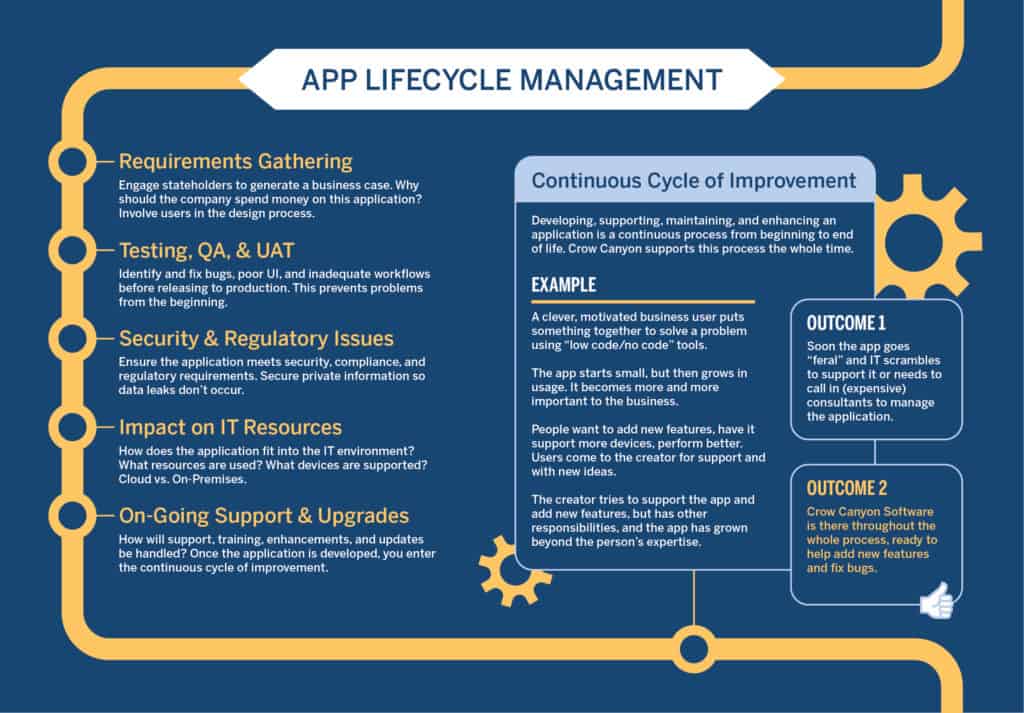Low-code/No-code Platforms Can Power Business Efficiency but Users Need to Follow Proper Procedures to Ensure Maximum Usefulness of the Applications They Create
 For building Office 365 applications, Citizen Developers using a no-code/low-code platform, such as our NITRO Studio for Office 365, Teams, and SharePoint, can produce effective solutions that improve the organization’s efficiency and streamline operations.
For building Office 365 applications, Citizen Developers using a no-code/low-code platform, such as our NITRO Studio for Office 365, Teams, and SharePoint, can produce effective solutions that improve the organization’s efficiency and streamline operations.
However, simply having a tool like NITRO Studio, as powerful as it is, does not make someone a skilled application developer. Established principles and methods should be followed to produce robust and sustainable applications. One model that has proven effective is “Application Lifecycle Management”.
Application Lifecycle Management (ALM)
ALM focuses on creating a solution that is well-designed, adequately tested, and fully supported during its lifetime. The goal is to manage the application from initiation until retirement, making sure it meets the organization’s needs and is optimized throughout its usage period.
At a basic level, ALM has these three elements:
- Design – gathering and refining requirements. Listening to end users and understanding their requirements is crucial to building a successful application. This may require several rounds of design meetings or it could be a simple brainstorming session. If an existing application is being replaced, designers can be guided by what worked and what did not in that solution. The design phase also needs to consider the scope of the application, the cost to both develop and to sustain it, and the timeframe for its implementation and usage.
- Development – creating and testing the solution. The application is typically proto-typed and then tested for any flaws in design or functionality. User Acceptance Testing can be conducted prior to release to production to ensure the application meets user requirements. Any product defects or bugs need to be fixed prior to release. A plan for implementation and rollout should be in place as well as a consideration if documentation and training are needed.
- Maintenance – supporting and enhancing the application. Once in production, on-going maintenance is required so that users can effectively use the application. A support team needs to be available to assist users with the application and to fix bugs. Enhancements and modifications are often required as the application grows in usage or if the IT environment changes. Performance monitoring can detect slowdowns and inefficiencies in operations.
Users of no-code/low-code platforms can create very useful applications. By adhering to the design, development, and maintenance principles mentioned above, along with using a highly capable tool like NITRO Studio, “Citizen Developers” can deliver applications that have significant impact on business operations and efficiency.

